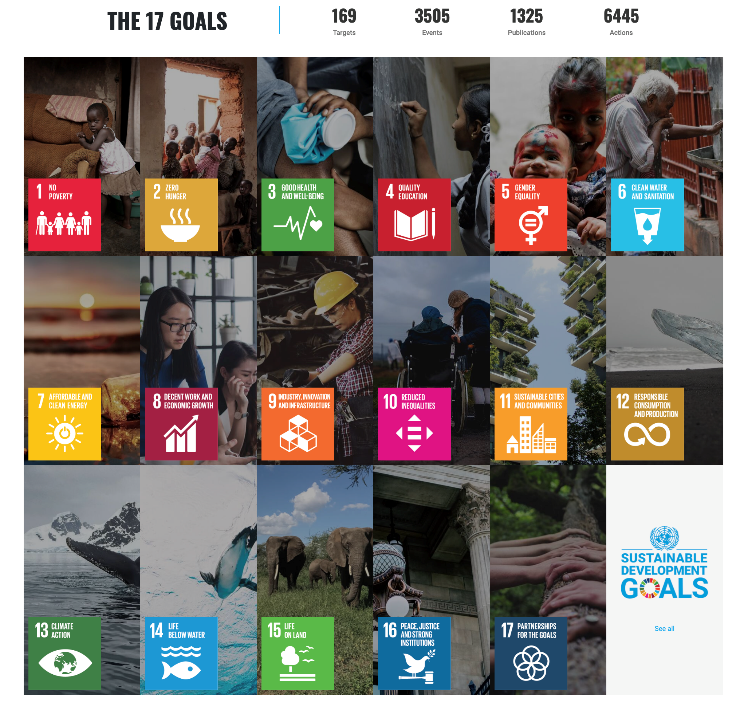Moving beyond superficial ESG and accelerating to a sustainable future
If we consider sustainability to be more than just the environment, we need to think how our businesses and organisations can not only survive but thrive in the future. With so many campaigns and policies and goals around reaching ‘net zero’ and ‘agendas’, it can be confusing to know what to aim for or where to even start.
What does the future look like?
We all like to talk about strategy vs. tactics and we agree both have their relevant place, but the fact remains that there’s simply no point in dashing in with tactics, unless you have a strategy. It’s aligned to bigger things.
Aura’s new framework, the Synergy Framework, focuses on four core areas, to keep things integrated, strategic and to ensure progress.
1 - Research – always work to inform a strategy and plan with data and insight. It makes it easier to measure impact.
2 - Stakeholder relations – what their needs and wants are.
3 - The UN Sustainable Development Goals – as a template for aligning goals and setting out an action plan.
4 - Strategic communication – strategy, plan, adapt, monitor and measure/report.
This means, we then need to consider current systems and processes and how they do/don’t work, what would improve them perhaps aided by technology and what would work better for stakeholders and their needs. This is a transformation project for businesses and organisations. It’s relating to behaviour change, different outcomes, up-to-date skills and knowledge and works across the whole organisation.
No-one has the answer to start off
I’ve had the opportunity to work with clients who have been at the start of their transformation journeys. A few things stood out:
- Communication function/team was not invited to the meeting.
- No-one started the meetings with a discussion on strategy, there was always a sense of doing ‘things’ to solve problems, but avoiding the biggest problem.
- Not all parts of the organisation were represented.
- No-one brought any research to the conversations to back-up proposals.
- The conversation never centred around the main problem and when it was brought up, it was like it was too big a problem to solve.
Communication is one of the only functions in the organisation to have a 360-degree view and internally, and should be the lynchpin of the organisation.
Much of the work I do is problem solving. It’s about listening, asking, doing the research and then connecting dots, before I even begin to write strategy. Putting a plaster over something buys time but it doesn’t change the root cause and that’s where we need to get to. Why is something not working or why is a specific area of the business racking up carbon? No-one likes to have the reality check of all the problems laid out, but it needs to be viewed as transformation vs adaptation.
How does transformation link to Environmental, Social and Governance (ESG)?
Most likely, people shy away from the root problem because it encompasses a range of issues in an organisation, from values, beliefs, power to inclusion, skills and resources within the ecosystems. No, one person or department can solve this alone.
This is why collaboration is vital across the organisation. If changing the norm or indeed values is part of this process, then you can see why its transformative.
I believe that we shouldn’t reinvent the wheel and that working to an already proven model will give best results. Let’s take the UN Sustainable Development Goals (SDGs) and use them in our strategy. There are 17 goals and there are over 160 targets relating to them.

Image credit: United Nations Department of Global Communications
Prioritise and plan long-term
Few organisations will work across all 17 goals, but there will be a number of areas to look at in the short, medium and long term, especially if innovation is a key component.
It’ll be important to prioritise these goals and to have that longer term view, relating back to your research findings. That’s where department/directorate leads need to come in – they will each have thoughts and experience in their own area of expertise. There’s no point in bringing in one sustainability specialist and ignoring everyone else. This is a transformation programme, after all.
The advantage of collaborative working is that you get access to a diverse knowledge and skillset, so you’re covering off all angles, plus, by involving people, you’re bringing them along on the journey too. In addition, you’re building resilience of the new process/system/way of working.
Communicating your plan
Assuming you’ve now got your insight, SDGs, you can then develop the strategy and agree on timescales and resources and develop an action plan to deliver.
When you write your communication strategy it’s important to consider some fairly unique points specific to ESG and the transformative approach.
There’s no way this will be right first off, so don’t worry if you revisit frequently after you’ve tested it with stakeholder groups. Transformation programmes normally have many changes and depend on circumstances. Within the communication planning phase, it’s important to have risk assessments and scenario plans in place for the various stages and against the various stakeholder groups. Remember and always link the organisation to its stakeholders.
Decision-making is essentially the driver and with many opinions and experiences involved, this can cause delays, so ensure that expectations are managed.
Rounding up the conversation, change doesn’t happen overnight and there is no silver bullet. Action is where we need to be focussing our energies, making a difference to everyday lives through sustainable business.
Laura Sutherland is the Founder and Director of Aura, a strategic communication and business advisory. She is a senior communication advisor and a Chartered practitioner with over 20 years’ experience in integrated communication and over 10 of those years working in climate and sustainability.
Featured image by Sakorn Sukkasemsakorn on iStock

